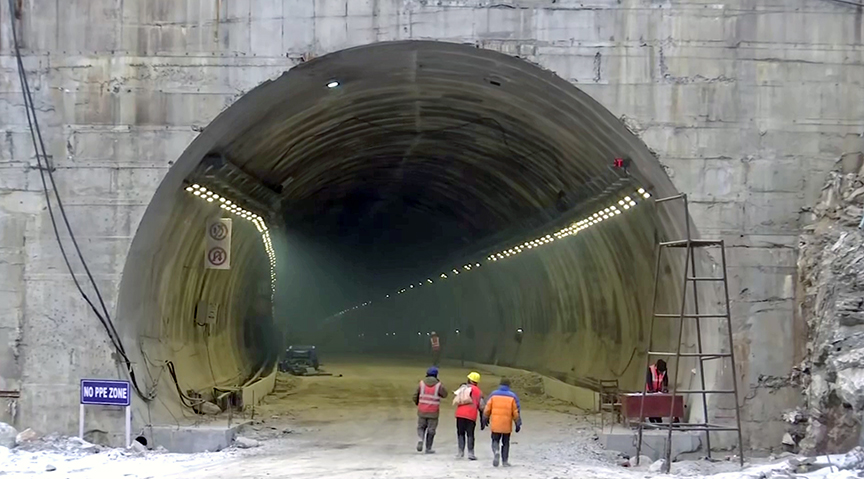Context:
The Prime Minister virtually dedicated to the nation the Sela Tunnel project during the Viksit Bharat Viksit North East program in Itanagar, Arunachal Pradesh.
About Sela Tunnel:
- The Sela tunnel project consists of two tunnels and a link road. It is the longest bi-lane tunnel above 13,000 feet in the world.
- While Tunnel 1 will be 980-metre long single-tube, Tunnel 2 will be 1,555-metre with one bi-lane tube for traffic and emergency services. The link road between the two tunnels will be 1.2 km long.
- It was constructed by the Border Roads Organisation (BRO) under Project Vartak.
- The tunnel is aimed at providing all-weather connectivity to Tawang across Sela Pass on the Balipara-Chariduar-Tawang (BCT) Road, which connects Tezpur in Assam to Tawang in Arunachal Pradesh.
- The Sela Tunnel has been constructed using the new Austrian Tunnelling Method and incorporates safety features of the highest standards.

Significance:
- Strategic Importance: The Sela Tunnel provides an all-weather route through the Himalayas, connecting Guwahati in Assam to Tawang in Arunachal Pradesh. This is crucial for military movement and logistics, especially considering the border dispute with China.
- Improved Accessibility: Previously, the Sela Pass remained closed for months due to heavy snowfall. The tunnel eliminates this barrier, allowing year-round access to Tawang and other border areas.
- Socio-Economic Benefits: Improved connectivity fosters economic development by enabling easier transportation of goods and services. It also promotes tourism in the region.
- Faster Deployment: The Sela Tunnel allows for quicker troop movement and deployment of resources in case of emergencies or security threats on the border. Heavy artillery guns can also be transported through the tunnel.
Challenges:
- Difficult Terrain and Weather: Building a tunnel at such a high altitude in challenging terrain and harsh weather conditions presented significant engineering hurdles.
- Environmental Concerns: Construction projects in the Himalayas can disrupt fragile ecosystems. Mitigating these environmental impacts requires careful planning and construction practices.
- Cost and Time: Constructing such a large-scale infrastructure project involves substantial costs and takes time to complete.
Project Vartak
Established: 1960
Organization: Project of the Border Roads Organisation (BRO) under the Ministry of Defence of India.
Focus: Construction and maintenance of roads in Arunachal Pradesh and adjoining districts of Assam.
Key Achievements:
- First departmentally constructed pre-stressed concrete bridge in the region.
- Instrumental in building the Sela Tunnel (world’s highest bi-lane tunnel above 13,000 feet).
Significance:
- Strategic: Improves border security with faster troop deployment.
- Economic: Enables better connectivity, promoting trade and tourism.
- Engineering Feat: Overcoming harsh Himalayan terrain for crucial infrastructure.
Conclusion:
The Sela Tunnel represents a significant advancement in Himalayan connectivity, offering strategic, economic, and social benefits.

